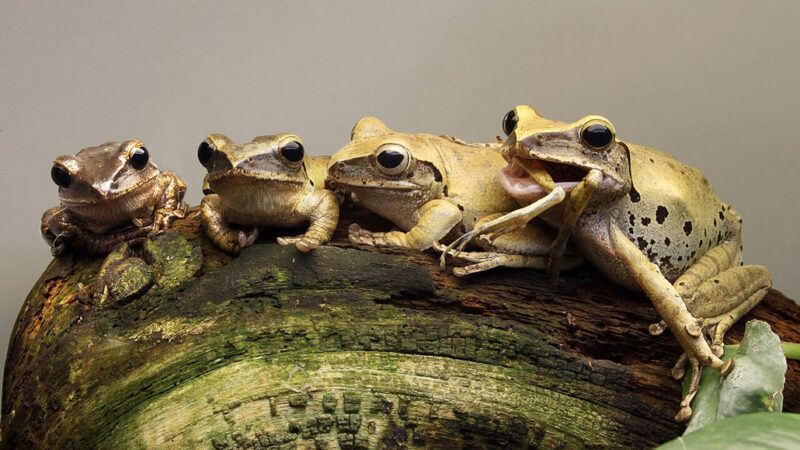
amphibians: A group of animals that includes frogs, salamanders and caecilians. Amphibians have backbones and can breathe through their skin. Unlike reptiles, birds and mammals, unborn or unhatched amphibians do not develop in a special protective sac called an amniotic sac.
birds: Warm-blooded animals with wings that first showed up during the time of the dinosaurs. Birds are jacketed in feathers and produce young from the eggs they deposit in some sort of nest. Most birds fly, but throughout history there have been the occasional species that don’t.
develop: To emerge or to make come into being, either naturally or through human intervention, such as by manufacturing. (in biology) To grow as an organism from conception through adulthood, often undergoing changes in chemistry, size, mental maturity or sometimes even shape.
diet: (n.) The foods and liquids ingested by an animal to provide the nutrition it needs to grow and maintain health. Sometimes this is a specific food-intake plan. (v.) To adopt a specific food-intake plan. People may adopt one for religious or ethical reasons, to address food allergies or to control a disease such as high blood pressure or diabetes. They may also adopt one in an effort to lose weight, although this can be unhealthy if not done under the guidance of a health professional, such as a physician or registered dietician.
embryo: The early stages of a developing organism, or animal with a backbone, consisting only one or a few cells. As an adjective, the term would be embryonic — and could be used to refer to the early stages or life of a system or technology.
insect: A type of arthropod that as an adult will have six segmented legs and three body parts: a head, thorax and abdomen. There are hundreds of thousands of insects, which include bees, beetles, flies and moths.
invertebrate: An animal lacking a backbone. About 90 percent of animal species are invertebrates.
jellies: (in biology) These are gelatinous animals that drift in water (mostly seawater) or brackish (semi-salty) estuaries. For more than 500 million years, they have moved around the oceans by pumping pulses of water through their jelly-like tissue. Their body often has an umbrella-shaped bell. Trailing from around a central mouth may be many tentacles. Although jellies don’t have brains, they do have a nervous system which can sometimes detect light, movement or certain chemicals. Some members of this family, known as cnidarians, are known as jellyfish. In fact, none are true fish but related to hydras and corals.
larvae: Immature insects that have a distinctly different form (body shape) than when they are adults. For instance, caterpillars are larval butterflies and maggots are larval flies. (Sometimes this term also is used to describe such a stage in the development of fish, frogs and other animals.)
mammal: An animal distinguished by possessing hair or fur, the secretion of milk by females for the feeding of their young, and (typically) the bearing of live young. They also are warm-blooded (or endothermic).
nutrient: A vitamin, mineral, fat, carbohydrate or protein that a plant, animal or other organism requires as part of its food in order to survive.
risk: The chance or mathematical likelihood that some bad thing might happen. For instance, exposure to radiation poses a risk of cancer. Or the hazard — or peril — itself. (For instance: Among cancer risks that the people faced were radiation and drinking water tainted with arsenic.)
shark: A type of predatory fish that has survived in one form or another for hundreds of millions of years. Cartilage, not bone, gives its body structure. Like skates and rays, sharks belong to a group known as elasmobranchs. They tend to grow and mature slowly and have few young. Some lay eggs, others give birth to live young.
sibling: An offspring that shares the same parents (with its brother or sister).
species: A group of similar organisms capable of producing offspring that can survive and reproduce.
spider: A type of arthropod with four pairs of legs that usually spin threads of silk that they can use to create webs or other structures.
taste: One of the basic properties the body uses to sense its environment, especially foods, using receptors (taste buds) on the tongue (and some other organs).
